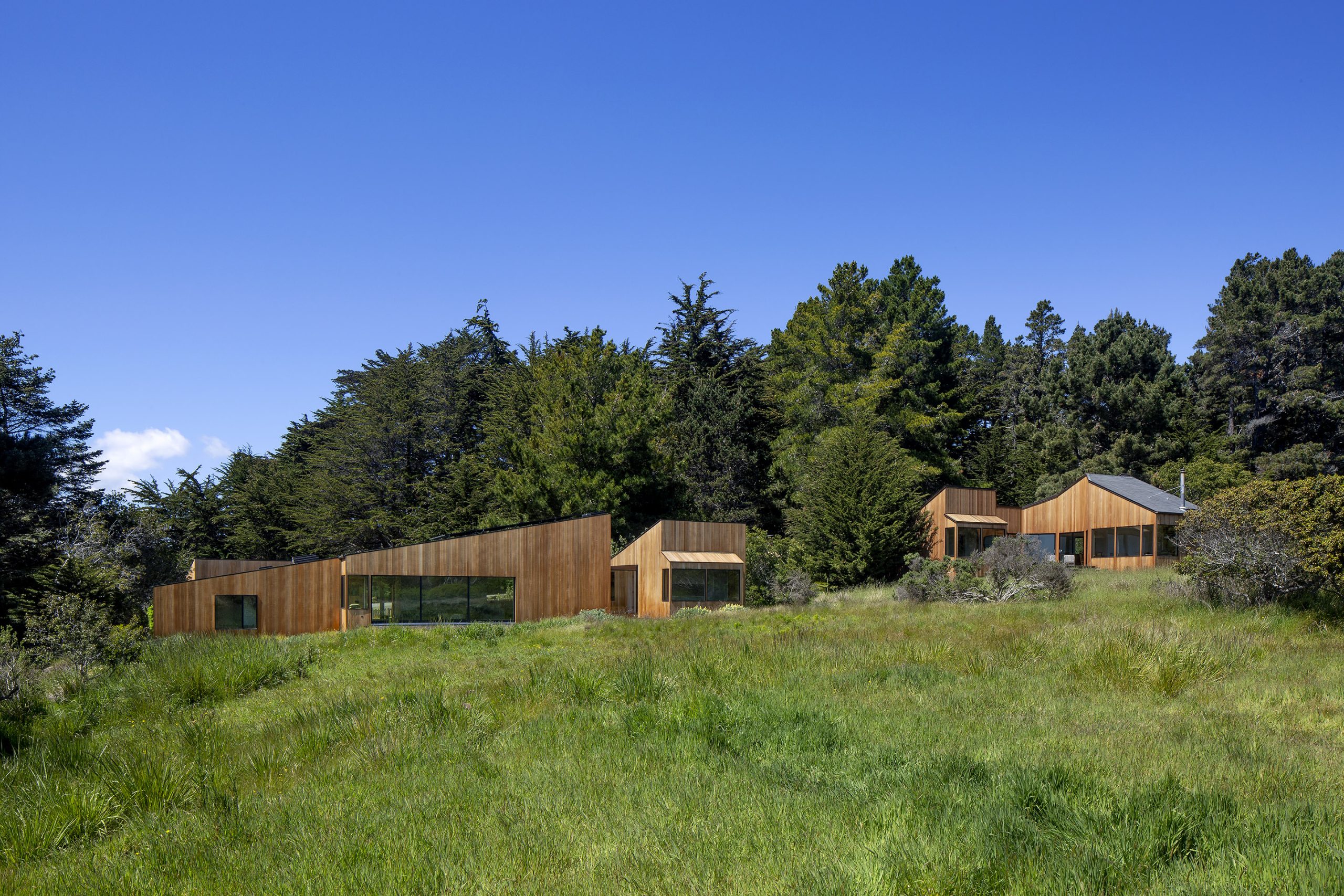Design for Ecosystems Award //project details Architect: Turnbull Griffin Haesloop Project Location: The Sea Ranch / California / USA Photographer: David Wakely Located alongside a Sea Ranch hedgerow, the gently
The post Sea Ranch Meadow II appeared first on AIA California.
Sea Ranch Meadow II
//project details
Architect: Turnbull Griffin Haesloop
Project Location: The Sea Ranch / California / USA
Photographer: David Wakely
Located alongside a Sea Ranch hedgerow, the gently sloping site opens to a meadow and Pacific Ocean views. The form of the house takes its shape from the slope of the land and the neighboring house above it, to which it is linked by a pass through and garden path.
The main living volume is nestled into its site, with the roof sloping down to a large horizontal sweep of retractable sliding doors and a corner window seat that emphasize the broad view. Diagonally opposite the roof stretches up to a tall set of corner windows that frame the existing stand of fir trees. A small corner skylight marks the passage of time throughout the day.
The cedar clapboard ceiling brings a three-dimensional crafted quality to the space and keeps the ceiling feeling light, masking the heavily insulated roof above. The photovoltaic array provides more power than the house currently uses, and the stone floor provides insulted thermal mass to keep the house comfortable throughout the day.
The project is part of The Sea Ranch community, which was founded on the concept of “living lightly with the land.” Once the owners arrive they are able to forget about their car and enjoy the beautiful trails and access to nature that is an integral part of the community and life at The Sea Ranch.
//comments
There’s a modesty to it. There’s a directness to the materials. | Very well-balanced spaces, with the living area–a knockout. | The wall out to the meadow is incredible. | It is “Sea Ranch”… and represents the enduring qualities of its place.
//framework for design excellence measures
Measure 1: Design for Integration
Our intention was to create a project that would quietly innovate within the design vocabulary of the Sea Ranch but advance it in terms of sustainable practices available now including site and envelope development, passive and active energy systems, and the careful use of materials.
The house is net zero. The form of the house with its long sloping roof allowed for a roof mounted photovoltaic array that provides significantly more power than the house currently uses. Operable windows and skylights allow for natural ventilation and keep the house at a comfortable temperature throughout the day. The house has radiant heating in the stone floor which allows the house to be heated efficiently and optimizes for occupant comfort.
Measure 2: Design for Equitable Communities
Measure 3: Design for Ecosystems
This project both at the request of the owners and by virtue of being part of the broader Sea Ranch development has made a commitment to respecting and supporting the ecological health of the local environment. The idea that people and nature can achieve a harmonious relationship and that buildings can exist in the landscape without overpowering it are fundamental to life at the Sea Ranch.
Measure 4: Design for Water
The lanscaping consists of native plant species that are drought tolerant.
Measure 5: Design for Economy
The design of this house was intended such that it could function as an extension of the existing house for large family gatherings and also work as an independent residence. This versatility reduces energy consumption by allowing only the spaces that are occupied to be heated.
Measure 6: Design for Energy
The house is net zero. The form of the house with its long sloping roof allowed for a roof mounted photovoltaic array that provides significantly more power than the house currently uses.
Measure 7: Design for Well-Being
Operable windows and skylights allow for natural ventilation and keep the house at a comfortable temperature throughout the day. The house has radiant heating in the stone floor which allows the house to be heated efficiently and optimizes for occupant comfort.
Measure 8: Design for Resources
Natural materials such as wood and stone were utilized throughout the project and sourcing was done locally when possible.
Measure 9: Design for Change
Resilience to Wildfires and Marine Coastal Weather are addressed through the material specifications and building assemblies.
Measure 10: Design for Discovery
The post Sea Ranch Meadow II appeared first on AIA California.
AIA CaliforniaRead More





